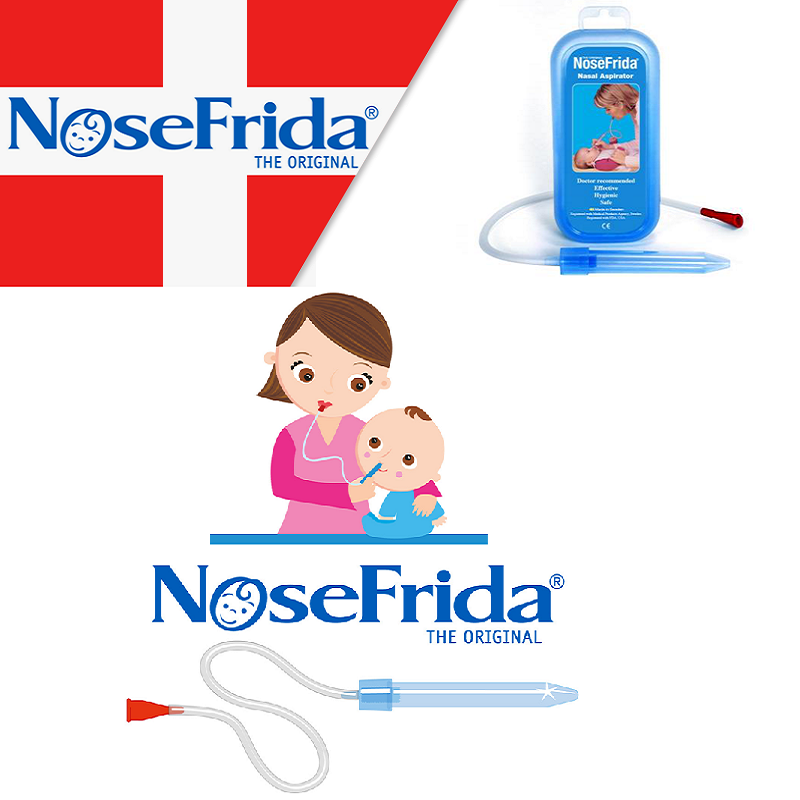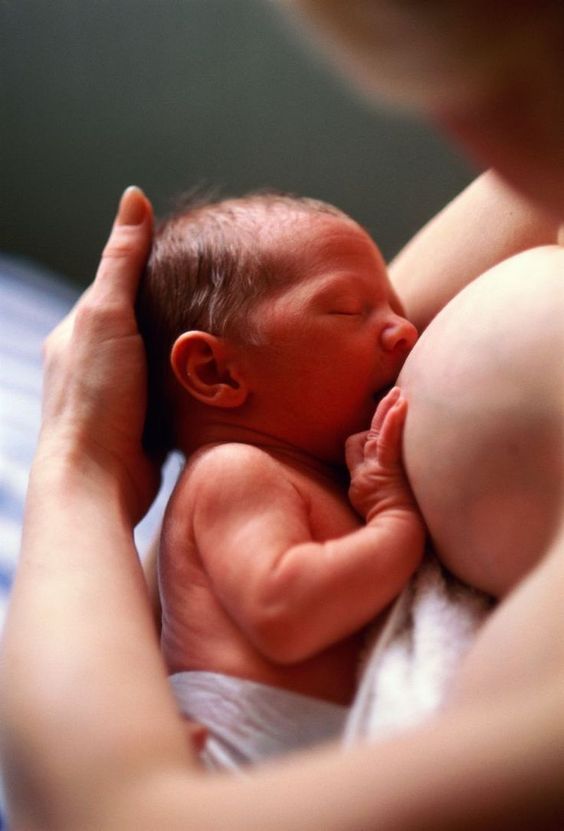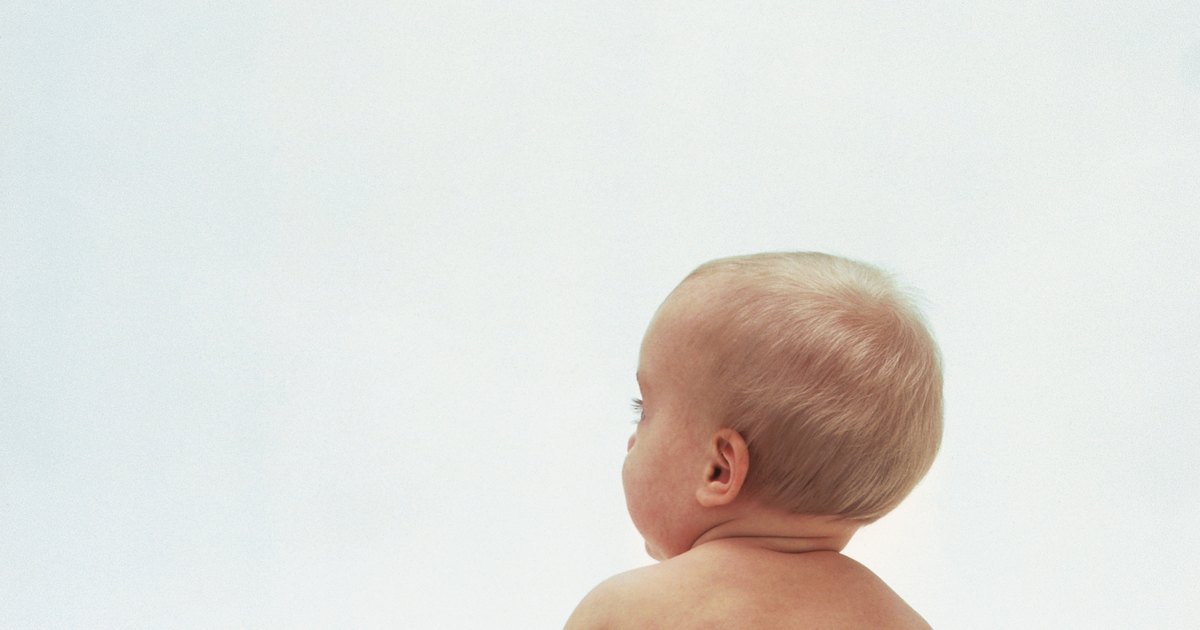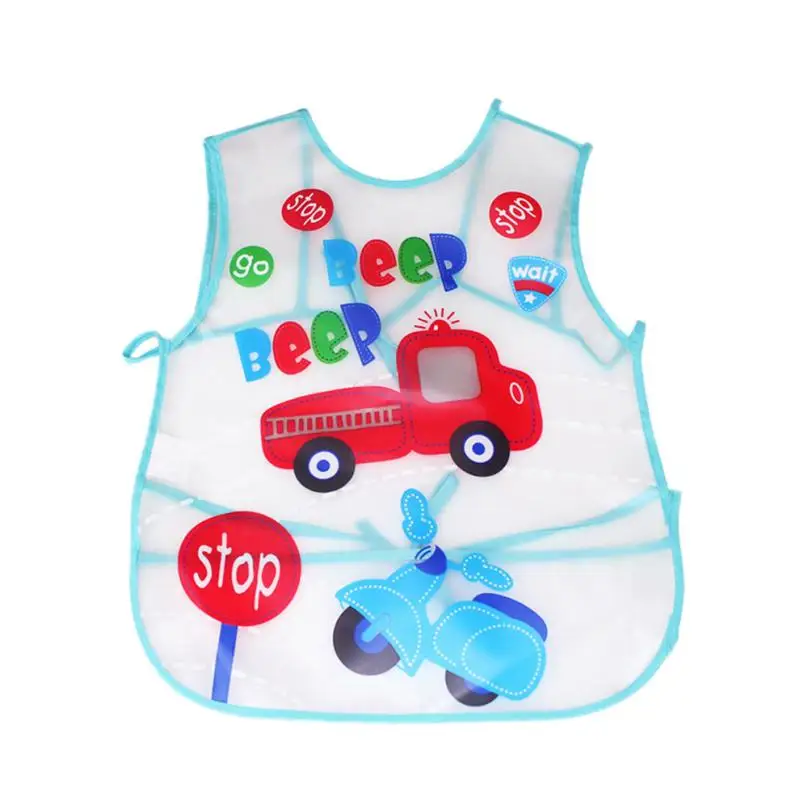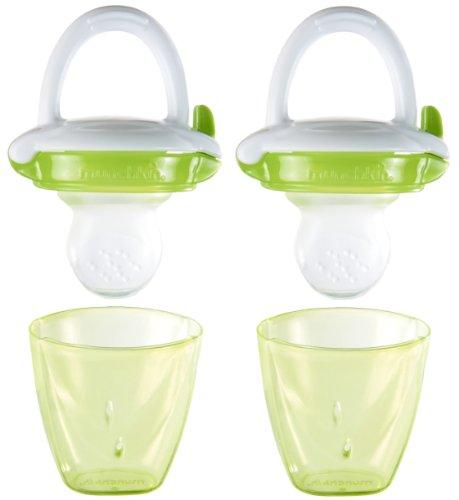What do you feed newborn baby rabbits
Caring for Newborn Baby Rabbits
IF THESE ARE WILD BABIES
It’s that time of year again. Wild babies everywhere. But are they at risk?
Wild rabbits hide their nests in plain view, often in the middle of your yard, bushes, etc. If you find a nest that has been disturbed, do the best you can to restore it and leave the babies in there. If a dog discovers the nest, do your best to restore it (with grass, leaves, whatever mama has used), make sure the kits are in there, and find a way to keep the dog(s) away from the nest. Mama will return for her babies and taking them away will seriously decrease their chance of survival. If you do not see the mama—DON’T WORRY—they only nurse their babies a few minutes a day, then they stay away so as to not draw predators to the nest.
If a kit is injured or an animal brings you an injured baby, if you have no choice but to help a baby, please do not try to care or it yourself—-get it to a rabbit vet or a wildlife rehabilitator
- Local wildlife rehabilitator: https://www.
nwrawildlife.org
- List of rabbit vets: http://rabbit.org/vet-listings/
The best thing you can do for wild babies is to leave them alone (restored to the nest) or, if injured, get them to a rabbit vet or wildlife rehabilitator.
DOMESTIC/PET RABBITS
WHERE TO PUT THE BABIES
Make the babies a soft nest area in a box with clean towels. We like to put one folded towel on the bottom and another bunched on top of that, so the babies can snuggle into it. You can also purchase soft nesting wool from a pet store and put that on top of the towel. You can also take whatever nesting material they were in and put it in the box as well. Cover the box almost entirely with a light towel, making sure that there will be enough air so the babies do not suffocate. Leaving about a one inch gap at the top is usually sufficient. Keep the babies in an out-of-the way, QUIET area, such as an adult’s bedroom. If the room temperature is between 68-72 degrees you will not need to provide extra heat, but if it’s cooler than that you will need to provide extra warmth.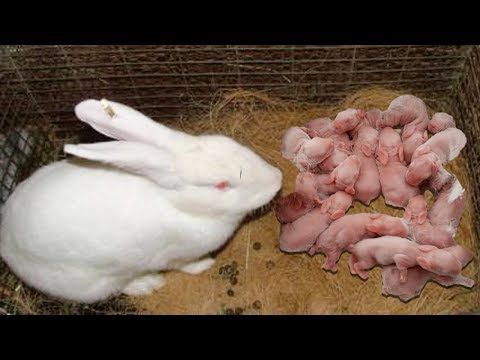 Use a heating pad set on low and slip it under one half only of the box. We do it this way so that the babies can move to a cooler area if it gets too warm. DO NOT put babies directly on heating pad, as babies can burn themselves very badly.
Use a heating pad set on low and slip it under one half only of the box. We do it this way so that the babies can move to a cooler area if it gets too warm. DO NOT put babies directly on heating pad, as babies can burn themselves very badly.
If the babies were with their mamma, but she is not caring for them (and you are sure she is ignoring them) you may need to separate her from them so they will not get hurt. Rabbit milk is very caloric and the kittens (baby rabbits) only nurse for a few minutes a day, so if you think that she is not caring for them based only on the fact you don’t see them feed…think again. If you do think they are being neglected, you can check: Are they cold? Are they making crying sounds for more than a few minutes before (or at) feeding time? Are they blue? Is the skin shriveled? Check for dehydration: gently pinch together the skin at the nape of the neck. If it sticks together or stays in a tent, they are dehydrated.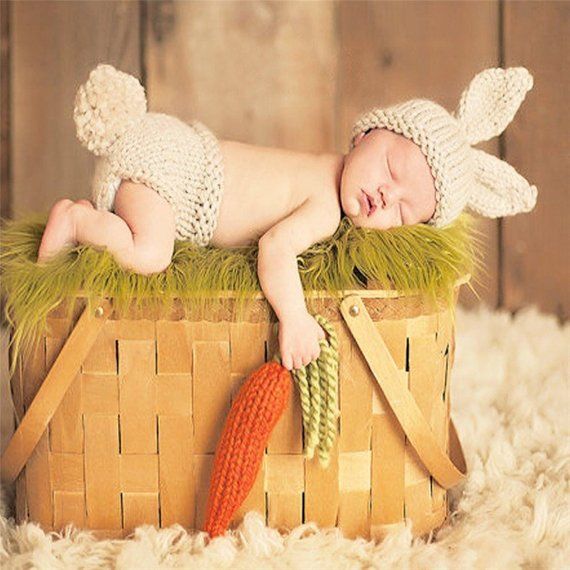 A healthy kit has a round belly, is warm, gains weight on a daily basis, and snuggles with its litter mates. If they are dehydrated, cold, losing weight or becoming injured, of course, something must be done
A healthy kit has a round belly, is warm, gains weight on a daily basis, and snuggles with its litter mates. If they are dehydrated, cold, losing weight or becoming injured, of course, something must be done
WHAT TO FEED THE BABIES
Baby rabbits should be fed Kitten Milk Replacer (KMR) or goat milk, which you can buy at pet stores, or sometimes even a local veterinarian’s office. Because rabbit milk is the most caloric of all mammals, we add in one tablespoon of 100% heavy whipping cream (no sugar) to each can of KMR. Most kits will not nurse from the baby animal bottles you can buy at stores. Instead, use a sterile oral syringe, which can be purchased at most pharmacies. A better alternative are these nipples, which come the a syringe, but you may not be able to find them locally/right away (link).
It is best to feed baby rabbits no more than twice a day, but sometimes it takes more feedings to get an adequate amount into them, especially at first.
How much to feed varies greatly on what breed of rabbit you are feeding, and how big the kit is, but here is a basic guideline for the daily amount to feed a domestic rabbit who will be approximately 5-6 pounds as an adult (average rabbit size). You can increase the amounts as needed for larger breeds.
To help the kits maintain healthy gut bacteria, go to your local health food store (and get a bottle of ACIDOPHILUS. Ask for the capsules that have the “grainy stuff” inside (they are easier to mix than the “powdery stuff”) and add a bit to the formula at each feeding.
ALL amounts below should be divided into two feedings per day.
- Newborn – 1 week
- 4-5 cc formula
- 1-2 weeks
- 10-15 cc formula
- 2-3 weeks
- 15-30 cc formula
- 3-6 weeks, until weaned
- 30 cc formula
HOW DO I DO THIS?
Baby rabbits feed from their mothers while lying on their backs. You may loosely wrap baby in a soft face cloth or hand towel and lay it on your lap or in the crook of your arm. If bunny will NOT eat this way, of course, do the best you can. It is ABSOLUTELY CRUCIAL to let the baby eat at it’s own pace—especially if it is not suckling from the syringe willingly. If you squirt the liquid in too quickly you can aspirate (get liquid in) the lungs and the rabbit will suffocate.
You may loosely wrap baby in a soft face cloth or hand towel and lay it on your lap or in the crook of your arm. If bunny will NOT eat this way, of course, do the best you can. It is ABSOLUTELY CRUCIAL to let the baby eat at it’s own pace—especially if it is not suckling from the syringe willingly. If you squirt the liquid in too quickly you can aspirate (get liquid in) the lungs and the rabbit will suffocate.
Until their eyes open (10 days): After each feeding it is important to make the bunny defecate and urinate to keep the intestinal tract and urinary system running smoothly. Use a soft cloth or a cotton ball moistened with warm water and gently stroke the genital area until the bunny starts producing stool and urine. Keep stroking until the bunny stops. You are replicating the behavior of the mother rabbit who would lick her young to stimulate them to go to the bathroom. The stool will be soft and may be varying shades of green and yellow. If the urine is brown and gritty, the buns are not adequately hydrated and you need to get them to a rabbit vet ASAP—-it is an emergency. Be sure to clean baby’s mouth with a damp cloth or paper towel, so that no milk dries in the hair.
If the urine is brown and gritty, the buns are not adequately hydrated and you need to get them to a rabbit vet ASAP—-it is an emergency. Be sure to clean baby’s mouth with a damp cloth or paper towel, so that no milk dries in the hair.
Baby rabbit eyes open at about 10 days of age. You may start introducing them to hay and pellets at this point, but no veggies or fruits yet. Just leave some timothy or orchard and alfalfa hay and pellets in a corner of the box where the babies can easily get to them. Make sure it the pellets are plain, high fiber and fresh, with no added goodies such as dried banana chips or seeds. Don’t ever leave a deep water dish in which a baby could drown; instead, use something shallow and rinse and fill it frequently.
If you have any questions, please contact us.
What To Feed Baby Rabbits — Rabbit Care Tips
The first six months of a rabbit’s life are pivotal to their long-term health. At this key stage of their development, a rabbit is constantly growing.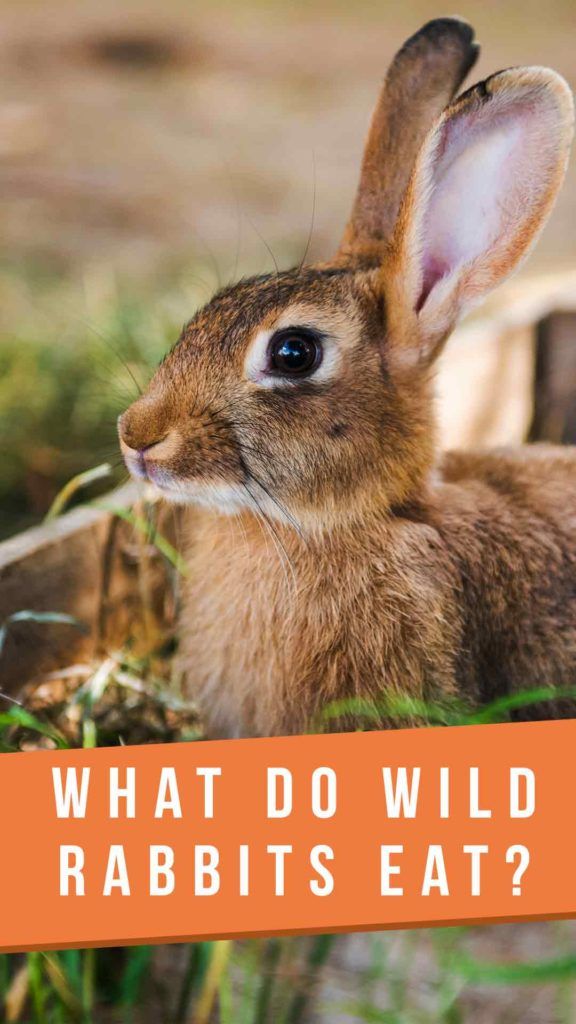 Their diet needs to reflect this fact. Ensuring that your baby rabbit is sufficiently nourished will mean healthy bones and muscle mass into adulthood.
Their diet needs to reflect this fact. Ensuring that your baby rabbit is sufficiently nourished will mean healthy bones and muscle mass into adulthood.
Hay and water are essential foods. Baby rabbits need more protein, so give them pellets and alfalfa hay. Your rabbit should be weaned. If not, use kitten or goat milk to imitate their mother’s milk.
Make sure that you get a baby rabbit into good eating habits. It’s tempting to overfeed young rabbits, but this can lead to obesity in later life. When their growth spurts subside, your rabbit needs less protein and more fiber. We will explain what the optimal diet plan for a baby rabbit is. You should also read our comprehensive guide to caring for baby rabbits.
New owners are sometimes surprised to learn what baby rabbits eat. Excessive carrots and iceberg lettuce can cause health issues. Instead, domesticated rabbits mainly sustain themselves on hay.
This replicates the experience of wild bunnies, which graze on grass all day. It would be impossible to provide a pet rabbit with enough grass to sustain itself. Hay is a substitute, and pet rabbits munch on it throughout the day.
It would be impossible to provide a pet rabbit with enough grass to sustain itself. Hay is a substitute, and pet rabbits munch on it throughout the day.
In addition to hay, rabbits enjoy fresh fruit and vegetables and specialist pellets. The former must be offered sparingly. Too many vegetables can cause a stomach upset.
Pellets are also optional once a rabbit reaches adulthood. Pellets are critical for young and baby rabbits, as they provide a range of vitamins and nutrients. They’re also calorific. Pellets must be reduced in quantity as the rabbit gets older. Don’t panic if your rabbit has stopped eating pellets.
Hydration is also just as important to a rabbit. Bunnies must always have access to fresh water. You can provide this in a bowl, or a bottle that’s attached to their hutch.
What to Feed Pet Rabbits
The three core elements of a rabbit’s diet are pellets, hay, and fresh vegetables. If we were to draw a diagram of a bunny’s needs, hay would be at the base as the most critical.
This is because a rabbit’s digestive tract is engineered to process the fiber found in grass. There are several different types of hay available, each with slightly different qualities.
- Grass Hay (aka Meadow Hay or Timothy Hay). This is the most popular hay feed among rabbit owners. This hay is fresh grass that has been cut and dried out. This means that it replicates a wild rabbit’s diet.
- Oat Hay. This hay is made up of oat grass, which is harvested before blooming. Once the oat blooms, this hay no longer contains any nutritional value for a rabbit. It can be used as bedding, though.
- Alfalfa Hay. This is a little different; it’s a legume, rather than grass. Alfalfa hay is usually fed to larger animals. It contains more protein and calcium than other hays, so it leads to weight gain.
Pellets are considered to be an essential part of a rabbit’s diet. Many claim that pellets are unnecessary for adult rabbits though, and are just empty calories.
If your rabbit is looking overweight, pellets should be sacrificed. Adult rabbits can happily sustain themselves on hay alone. Pellets are essential for helping a young rabbit grow, though.
These should always be kept as a treat, especially fruit. Rabbits love sweet tastes, so they enjoy berries, raisins, parsnips, and carrots. Their bodies are not designed to process carbs, though.
A rabbit can enjoy a tablespoon of fresh fruit and vegetables for every 2 lbs. of their body weight.
Again, an overweight rabbit should not receive any fruit and veg for a while. Rabbits do not necessarily need these to flourish. They’ll get all the vitamins they need from hay.
Baby Rabbit Feeding Guide
Young bunnies need to eat more, as they are continually growing. Baby rabbits also use food to stay warm ahead of the first shedding of their fur. Here’s some info on when baby rabbits get fur.
The diet of baby rabbits adjusts steadily as they grow. They’ll start eating solid hay at around 2 weeks of age. This will be supplemented by milk from their mother, though. By the time they reach 4 weeks, baby rabbits eat pellets and hay.
They’ll start eating solid hay at around 2 weeks of age. This will be supplemented by milk from their mother, though. By the time they reach 4 weeks, baby rabbits eat pellets and hay.
Feed alfalfa hay to a baby rabbit. The protein and calcium found within will help them grow strong muscles and bones. Also mix in some standard hay, though. This will make the transition easier when your rabbit reaches adulthood.
You should also ensure that you pick up pellets designed especially for young rabbits. These will provide everything that a growing bunny needs.
Whatever you decide to feed your baby rabbit, keep it consistent. Any bunny is sensitive to changes in diet, but young rabbits are especially so. Don’t chop and change unless it’s strictly necessary.
Baby Rabbit Food List
Before you even bring your rabbit home, you should pull together a shopping list. Healthy food for baby rabbits is pivotal, so don’t make any best guesses after their arrival.
You’ll need to buy hay in advance.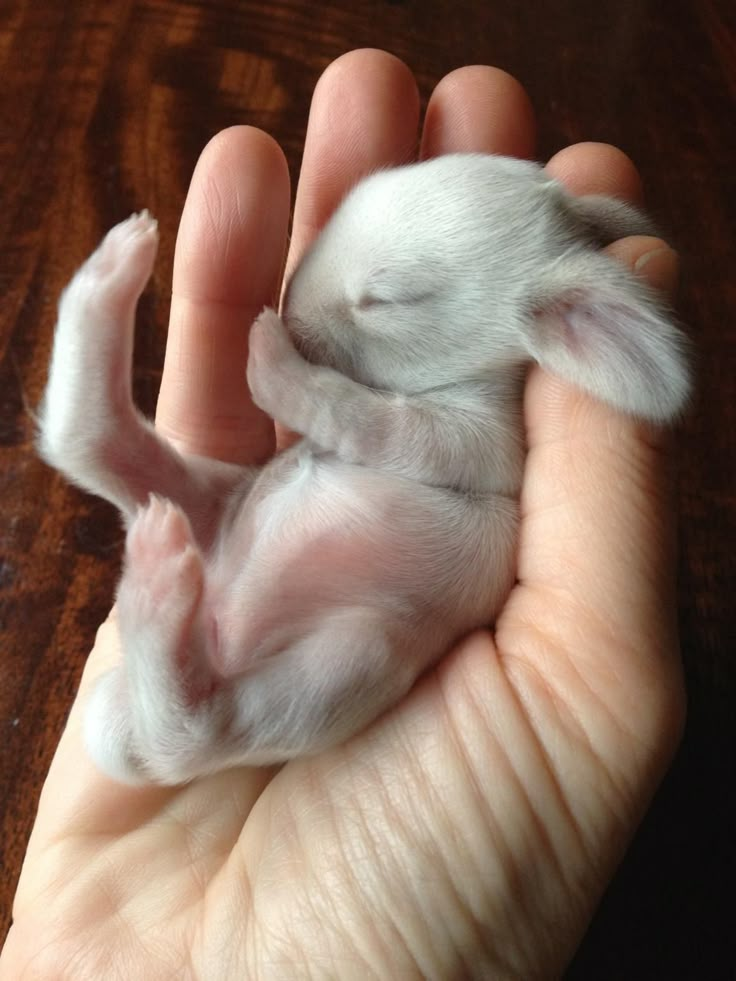 Prioritize alfalfa hay, but get some traditional meadow hay too. Your bunny cannot eat alfalfa hay forever, so don’t let them get too attached to the taste.
Prioritize alfalfa hay, but get some traditional meadow hay too. Your bunny cannot eat alfalfa hay forever, so don’t let them get too attached to the taste.
You’ll also need pellets. Have a chat with a clerk in your local pet store, and get the ideal pellets for your bunny. There will be numerous options, tailored to different life stages.
Avoid the temptation to buy a huge bag of pellets. You may be told that baby rabbits can eat unlimited pellets. Pellets can grow moldy quite quickly. Smaller bags are preferred.
Pellets
It’s advisable to make pellets part of your baby rabbit’s meal plan. These will help your young bunny grow up happy and healthy. Both quality and quantity should be carefully managed, though.
Tread carefully around claims that baby rabbits can eat unlimited pellets. In theory, this is correct. The ever-growing body of a bunny will cope with the calories consumed while they’re so young.
All the same, this is teaching your bunny bad habits. They’ll grow accustomed to having a constant supply of pellets. If you remove this option as an adult, they’ll grow distressed. It’s better to teach a young rabbit to enjoy hay early.
They’ll grow accustomed to having a constant supply of pellets. If you remove this option as an adult, they’ll grow distressed. It’s better to teach a young rabbit to enjoy hay early.
Also, ensure that you pick up the highest quality pellets possible. They should make up at least 22% fiber. Protein should not amount to more than 14%. Avoid anything with more than 1% calcium, as this can be harmful.
Don’t be tempted by muesli-based pellets. These will be tastier, as they contain nuts and seeds. A baby rabbit will pick out the nutrient-deficient fun ingredients, and ignore the rest.
Hay
Alfalfa hay is ideal for baby rabbits. For the first months of their life, a rabbit will enjoy the protein in this hay. As pellets also contain alfalfa, your baby bunny will be in good health.
Even though alfalfa hay is good for baby rabbits, it shouldn’t be all they have. Aim for a ratio of around 60:40, mixing alfalfa with traditional grass hay. This will make the eventual transition to meadow hay only less jarring.
Another thing to remember is that your rabbit’s hutch will be filled with hay. They’ll sleep on it, and generally surround themselves with the substance. This also means that your rabbit will pee and poop in their hay.
As baby bunnies have immature brains and bladders, they take a while to be litter trained. This needs to be handled with care. Urine can turn hay moldy, and moldy hay is toxic to rabbits. Clean their hutch regularly.
It’s vital that your baby rabbit sees hay as a source of pleasure. Get them into the habit of grazing on hay as early as possible. Incorporate it into playtime, and exercise.
Fresh Fruit and Vegetables
In the past, popular opinion dictated that baby rabbits should not be fed fresh food. This is because young bunnies have particularly sensitive digestive tracts. The truth is, fresh fruit and vegetables are fine in moderation.
The misconception that fresh vegetables are dangerous to baby bunnies arose through a lack of education.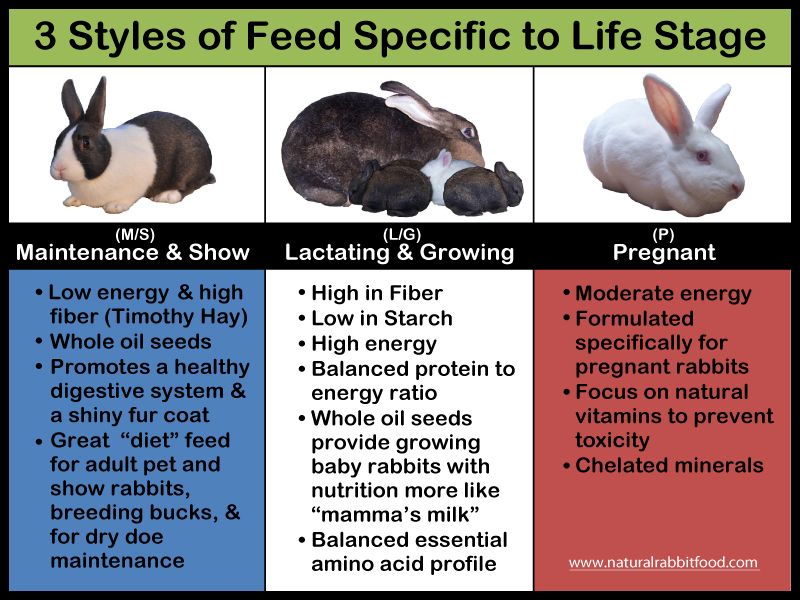 Feeding a rabbit of any age-inappropriate vegetables will cause stomach upsets. A bunny needs time to adjust to dietary changes.
Feeding a rabbit of any age-inappropriate vegetables will cause stomach upsets. A bunny needs time to adjust to dietary changes.
When bringing home a baby rabbit, learn what fresh food their mother enjoyed. Once the bunny reached 4 weeks of age, they would have nibbled on these vegetables too. Their stomachs will be able to cope with them in small doses.
Fresh vegetables will also help a young rabbit manage the size of their teeth. Rabbit teeth never stop growing. By crunching on tough, solid vegetables, they’ll be filed down.
Fruit is best avoided in baby rabbits, unless used as training treats. Offer small amounts of vegetable as a treat, once your bunny has eaten sufficient hay.
Should I Give a Baby Rabbit Meat?
Meat must be avoided. While baby bunnies need protein, they don’t need meat. They’ll suffer from an excess of protein, and experience stomach upsets as a result.
Your rabbit may develop a taste for meat. A little won’t kill them, but it will make them uncomfortable.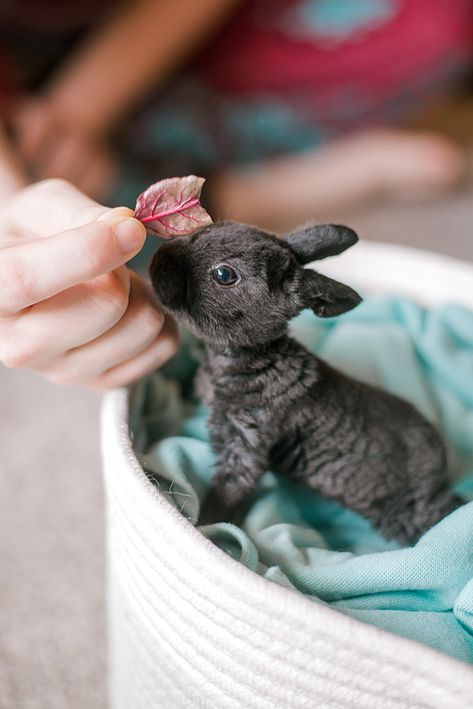 A rabbit’s digestion is engineered to process fiber, not protein. The older they get, the more problematic this will become.
A rabbit’s digestion is engineered to process fiber, not protein. The older they get, the more problematic this will become.
Rabbits are herbivores. They do not want or need to eat meat. Babies are no exception to this rule.
Can Baby Rabbits Drink Water?
Baby rabbits can drink water. It should be actively encouraged.
Rabbits will start to hydrate from their mother’s water source at around 3 weeks old. As baby bunnies eat more dry food, water becomes particularly important. They need to hydrate regularly to stay healthy.
It’s vital to learn how your baby rabbit enjoys drinking. Some bunnies find water bottles fun. Others would rather lap from a bowl. Encourage your pet to drink in whatever way they prefer.
If you use a bowl, ensure that it’s heavy and shallow. Baby rabbits are playful and curious. They will splash around in water if they can. This can turn their hay moldy, and wet rabbits suffer a drop in body temperature.
Can Baby Rabbits Drink Cow Milk?
Baby rabbits drink milk from their mother’s until they’re 8 weeks old..jpg) A bunny should never be separated from their mother before this. If you’re offered a rabbit younger than 8 weeks by a breeder, walk away.
A bunny should never be separated from their mother before this. If you’re offered a rabbit younger than 8 weeks by a breeder, walk away.
If you must provide a rabbit with milk, don’t use cow milk. This is too dense in calcium. The closest equivalent is kitten milk. Warm goat milk will be suitable in a pinch.
Rabbit milk contains more calories than kitten milk, though. As a result, mix in a tablespoon of sugar-free heavy cream. Baby bunnies should be fed milk twice a day.
Also, don’t forget that baby rabbits are not sustained on milk alone. Once they reach 2 weeks, they also need water and solids. Failing to provide these will leave a rabbit malnourished.
How Can I Tell if My Baby Rabbit’s Diet is Healthy?
Young rabbits need to nap regularly, but they’ll be energetic in between. If your young rabbit is lethargic, it may be due to dietary deficiency.
Another way to check on a rabbit’s condition is their droppings. Rabbit poop is a fine way to assess your bunny’s digestive health.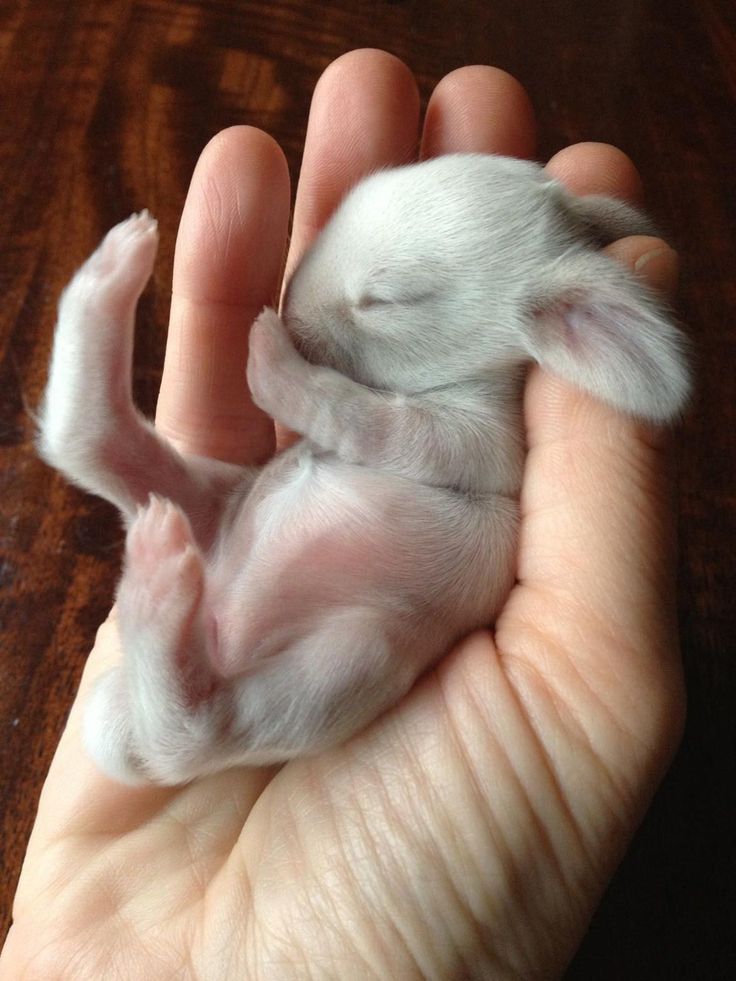 Rabbit’s produce two types of poop:
Rabbit’s produce two types of poop:
- Pellets, which will be littered throughout their cage.
- Cecotropes, which are bunches of fecal matter that the rabbit eats.
A healthy poop pellet will be light brown, and will crumble when picked up. If your rabbit’s feces pellets are dark, it suggests they’re eating too much protein.
Diarrhea in a baby rabbit is a medical emergency. This condition can be fatal in hours. Administer the first aid suggested by the University of Miami, and make an urgent vet appointment.
My Baby Rabbit Eats Too Fast
This is nothing to worry about. Even if it leads to hiccups, these will pass in a short period of time.
The main reason that baby rabbits eat quickly is food insecurity. Until they get into a strict routine, bunnies worry about when they’ll be fed. They’ll guzzle food in case they don’t receive any more.
Rabbits that share a hutch are particularly likely to eat fast. They’ll be worried that another, older bunny will eat their share otherwise.
They’ll be worried that another, older bunny will eat their share otherwise.
Also, remember that baby rabbits are always growing. This means that they’ll be hungry pretty much constantly. Once they establish a routine, they’ll calm down.
My Baby Rabbit is Not Feeding
If your baby rabbit is refusing to eat, it’s essential to find out why. A rabbit not eating at any age is worrying. This goes double when the bunny is young.
A young rabbit eating less as they reach adulthood is not as concerning. As they grow older, rabbits need fewer calories. They may take to eating more hay than pellets. This is a good thing. Don’t let them eat too much alfalfa hay, though.
You should also check that your bunny is not just being stubborn. If you have changed their diet, they may be holding out for a favorite. This needs to be managed carefully.
Baby rabbits need to eat, but if you cave too quickly, you’re setting a dangerous precedent. They’ll refuse to eat anything that doesn’t like into adulthood.
Move the bowl around in the first instance. If a rabbit feels a draught, it will put them off eating. Food that’s too close to a preferred elimination spot will also deter a bunny from eating. Rabbit pee has an overpowering smell.
Also, ensure that your baby rabbit is not anxious. Being separated from their mother and siblings can be distressing. Offer plenty of TLC and a welcoming home environment to help your bunny settle.
Spaying or neutering young rabbits also leads to behavioral changes. Your bunny may temporarily lose their appetite. This should pass quickly. Observe them, and take action is necessary.
Alternative Food for Baby Rabbits
If your baby rabbit is refusing to eat, you’ll need to offer the formula. This is often easier said than done. Seek professional help to ensure your bunny is sufficiently nourished.
Use kitten or goat milk if you cannot source rabbit-specific milk. Zooh Corner recommends feeding milk at the following quantities, at least twice a day. If your rabbit will not eat hay or pellets, they’ll need more:
If your rabbit will not eat hay or pellets, they’ll need more:
- 1 – 2 Weeks of Age – 10 – 15 cubic cm
- 2 – 3 Weeks of Age – 15 – 30 cubic cm
- 3 – 8 Weeks of Age – 30 cubic cm
You can pick up a syringe to provide this milk from a pet store. Many baby rabbits will not take to this, though. Bunny-savvy suppliers will stock a product called the Miracle Nipple. This imitates the nursing experience.
This is not a permanent solution, though. You must learn why your rabbit is not eating, and resolve the issue.
Feeding a baby rabbit is largely similar to nourishing an adult equivalent. Young bunnies eat more, and show more interest in pellets.
What’s most important is that you get your rabbit into good habits surrounding food. Like any animal, a rabbit’s formative experiences will play a significant role in their adult persona.
Help a rabbit eat appropriately while they’re young, and they’ll reach adulthood in a healthy condition.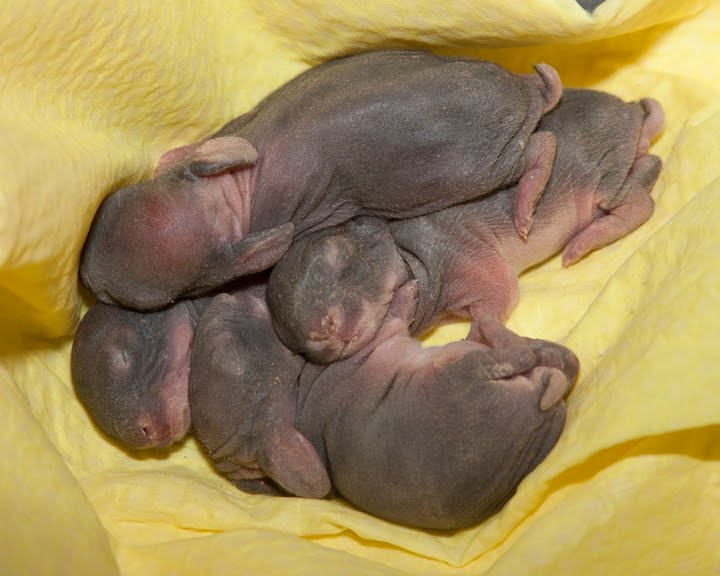 From there, you can enjoy a long and happy relationship.
From there, you can enjoy a long and happy relationship.
Councils to the hostess
Content of the article:
- How to feed newborn rabbits
- video
Newborn rabbits need milk
- photo
- Getty 9000 under the responsible approximate a lot of patience is quite possible. First of all, you need to decide on the choice of food.
What to feed newborn rabbits? As a rule, for this they apply:
- fresh cow's milk. This is the easiest option, but cow's milk is not fat enough for rabbits, so you need to dilute it in half with regular condensed milk;
- goat's milk is excellent for baby rabbits. It contains enough fat to meet the needs of the baby's body;
- powdered milk for animals. It can be purchased at a pet store. It is diluted according to the instructions.
Milk temperature must be measured before feeding. It should be 36-37 ° C.
The pet store also sells special feeding equipment, but you can get by with a pipette or syringe without a needle. Before the first use, they must be washed well and doused with boiling water.
It is very important not to overfeed the animals. For newborn rabbits, the daily dose is 5 ml, no more than 1 ml should be given per feeding. Thus, the diet is also established: babies eat five times a day.
When the rabbits are 7-10 days old, the daily allowance is doubled and is 10 ml. Two-week-old pups need 15 ml.
Milk should not be poured into the mouth in a continuous stream. The mouth must be moistened and wait until the rabbit licks everything.
It is necessary to closely monitor the well-being of babies. They should be active, but not too fussy. In healthy rabbits, the stomach is elastic and slightly convex. Until they are two weeks old, after each feeding, the abdomen should be gently massaged with a damp cotton pad in the direction from the navel to the hind legs.
 This procedure is very important, it helps to empty the intestines.
This procedure is very important, it helps to empty the intestines. The color of feces in animals should normally have a greenish tint. Brown color indicates problems that have arisen.
To prevent infection in rabbits, all syringes and pipettes must be thoroughly rinsed after each use.
Also interesting to read: cork underlay for linoleum or laminate
Wday.ru editors
Readers today0003
What does the wife of the most beautiful Arab in the world look like? Millions of women envy her
"Naked Aphrodite": Semenovich showed herself in the bath - this video can make you numb
Safe ways to remove ear plugs at home
How to feed rabbits without a rabbit
How to feed rabbits without a rabbit - this question sooner or later confronts all owners of farms where rabbit breeding is practiced. The best option is to replant the babies with another female or resume natural feeding from their own mother, but this is not always possible.
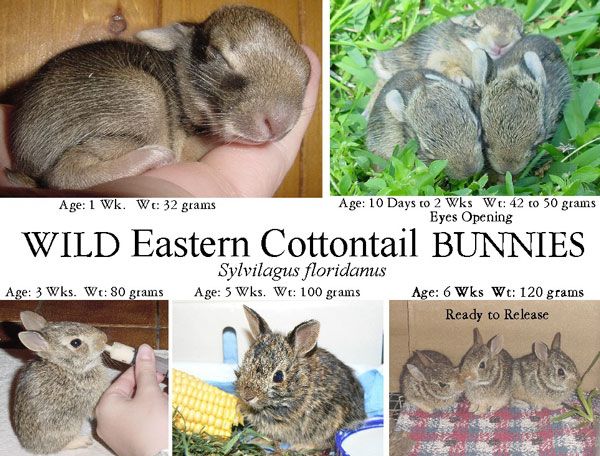 In this case, artificial feeding becomes the only way out.
In this case, artificial feeding becomes the only way out. Is artificial feeding of rabbits justified?
Many rabbit breeders are of the opinion that artificial feeding does not make sense - babies get sick, develop poorly and rarely live more than a few weeks. Indeed, raising rabbits on your own is quite difficult and requires patience, scrupulousness and a sequence of actions. But if everything is done correctly, the rabbits grow up healthy and beautiful.
If you notice that the female rabbit is aggressive towards the rabbits, chews them or refuses to feed them, try stretching her nipples a little, plant them and slip them in this position. You need to hold mom a little so that the kids have time to eat. But when no tricks help, you need to immediately decide on artificial feeding - the rabbits very quickly weaken without feeding, freeze and die.
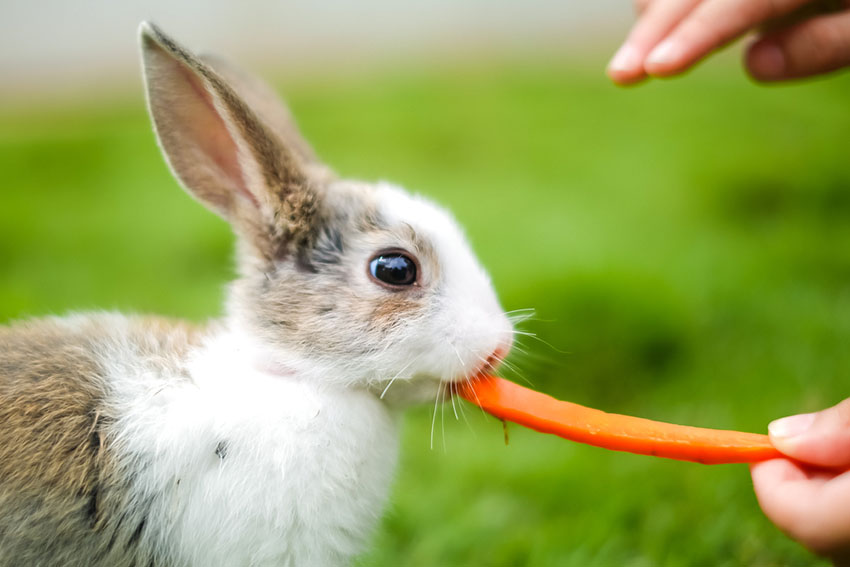
It is hardly possible to talk about 100% survival on artificial feeding. Much depends on the age at which the offspring is located. The most necessary and valuable substances for the body of the cubs enter their body with the first drops of mother's milk. It is they who launch the immune system and give the strength of life. It is clear that the most difficult thing is with rabbits, who received nothing at all from their mother. But you can feed from scratch if everything is done correctly.
What to feed little rabbits?
Compare the nutrient content of cow, rabbit, goat, dog and human milk.
Three variants of artificial food can be considered optimal:
- Dog milk is closest in composition to rabbit milk. But even if there is a lactating dog somewhere nearby, you can’t slip the rabbits on her for obvious reasons. But you can buy powdered dog milk for feeding puppies.
- A good result is obtained by artificial mixtures sold in specialized stores and intended for feeding kittens, puppies, rabbits.
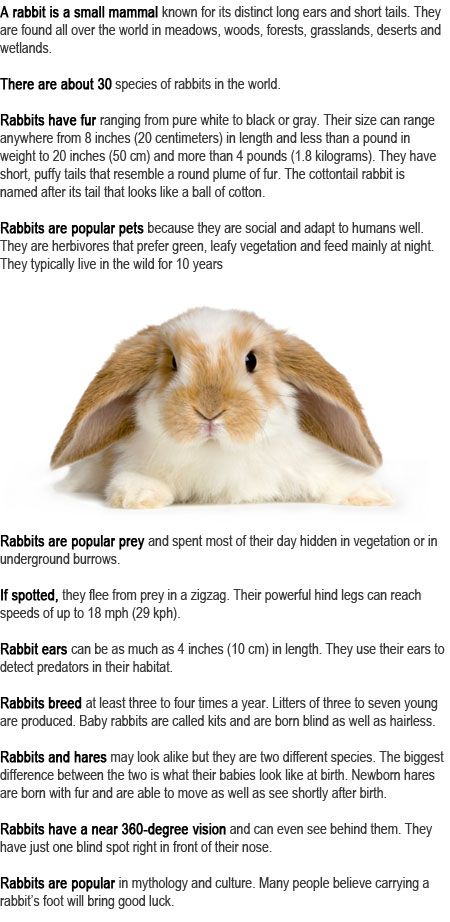
- Often, in the absence of either one or the other, they resort to goat's milk, but its composition is still very different from what the rabbit feeds her babies.
Since there is not always time to buy the right food, it is better to prepare in advance or start from the most affordable option. In rural areas, it is usually not a problem to get goat milk; closer to the city, it is easier to buy a special formula for feeding. In extreme cases, you can use infant formula, which is always available in a house where small children live.
Proper feeding of rabbits without a rabbit
Rabbits need to be fed drip. Based on this, a tool is selected - it can be a syringe with a removed needle or a drop bottle with a removable nipple. If you have time to prepare in advance, you can purchase a special kit for feeding newborn baby animals at the pharmacy.
 It usually includes syringes and several feeding nozzles.
It usually includes syringes and several feeding nozzles. If the babies are already a few days old, you can try to feed with a pipette, later replacing it with a regular nipple. Approximately starting from the age of one month, babies can themselves lap from a saucer. In rare cases, it turns out to be accustomed to a saucer already on the 15-20th day of life.
The health and survival of babies depends on how well artificial feeding is performed. It is necessary to take into account both instincts and biological characteristics and reproduce the natural process of feeding to the maximum. At first, the rabbits do not perceive the artificial udder very much, they react weakly to it or completely ignore it. Therefore, especially the first feedings should be carried out very carefully, do not forcefully pour milk inside, but lightly smear one drop over the oral cavity and let the baby lick off the mixture himself. Forcibly dripping into the mouth can cause the rabbit to suffocate if the milk enters his respiratory tract.
 the baby should be in an upright position, that is, it must be held with one hand. Over time, the kids get used to it, and the procedure becomes easier.
the baby should be in an upright position, that is, it must be held with one hand. Over time, the kids get used to it, and the procedure becomes easier. A newborn baby rabbit needs 4-5 ml of milk or formula per day. The frequency of feeding is 2-5 times a day (depending on how willingly and intensively the kids absorb the offered food, how they go to the toilet). Do not think, the more often you feed the rabbits, the better. Each feeding takes strength from the baby, while he gets very tired. At first, give the rabbits 10-12 drops of milk and feed no more than 3 times a day.
It is important not to overfeed babies. When they get used to the pipette, they eat more willingly and may well “overdo it” with the quantity. In this case, the rabbit's stomach is full, which can be hazardous to health. This can be avoided by taking small breaks in feeding. If, after a short pause, the baby is no longer active, it means that he is already full and no longer needs to give milk.
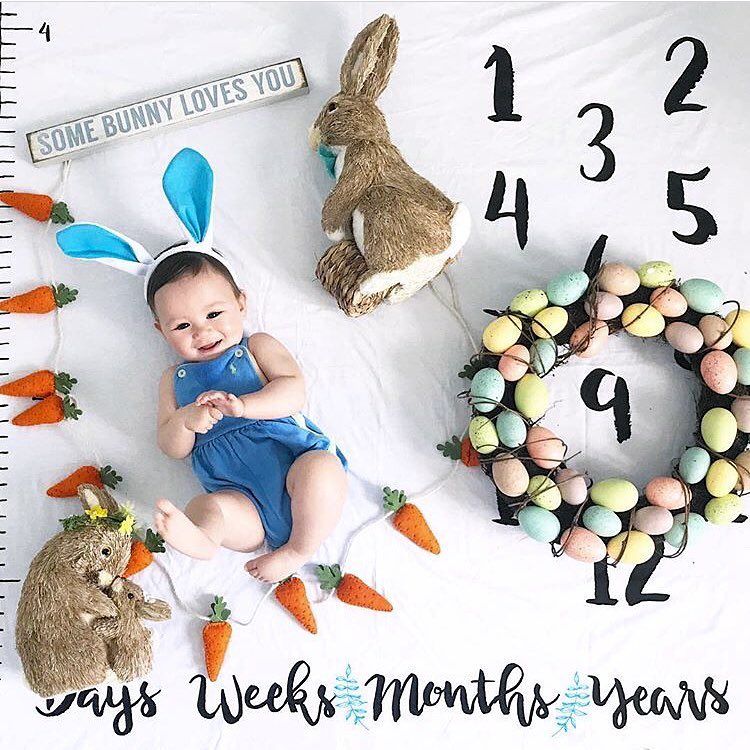
The milk norm increases with the age of babies. After a week, the rabbit should receive twice as much milk, and after two - three times. The approximate norm for 2-3 week old rabbits is 7-13 cc of milk (you can start adding green herbs, granulated food and water), for 3-6 weeks old - 13-15 cc (feed 2 times a day). Then you can gradually include dry food in the diet of rabbits, starting with grated carrots, chopped hay.
Many rabbit breeders recommend adding acidophilus to milk, and at the age of 7-10 days, start giving cecotrophs (rabbit droppings balls) to rabbits. The fact is that most often artificially fed rabbits die from mucous enteritis, the signs of which can be liquid droppings, the presence of blood and mucus in it, diarrhea, refusal to eat, bloating and gases.
The cause of this disease is the accelerated growth of pathogenic microflora in the caecum. The acidity level of babies and adult rabbits is very different (in the direction of greater acidity in babies).
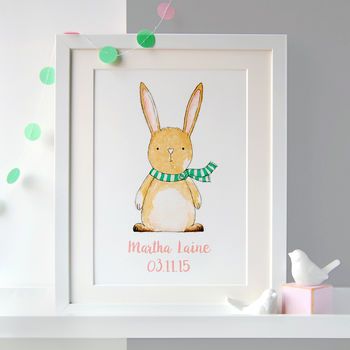 When baby rabbits are born, the inside of their stomach is practically sterile. Mother's milk provides the necessary immune protection and practically cannot bring pathogenic bacteria to babies. And when the babies open their eyes at the age of 10 days, they begin to pick up the mother's caecotrophs themselves. Artificially fed babies are deprived of this opportunity.
When baby rabbits are born, the inside of their stomach is practically sterile. Mother's milk provides the necessary immune protection and practically cannot bring pathogenic bacteria to babies. And when the babies open their eyes at the age of 10 days, they begin to pick up the mother's caecotrophs themselves. Artificially fed babies are deprived of this opportunity. When a rabbit is just born, it does not yet have the instinct to empty the stomach, bladder and intestines. With natural feeding, these processes are monitored by the mother, who licks the tummies of her babies with her tongue, thereby squeezing the contents from the intestines. With artificial feeding, this responsibility falls on the owner of the animals.
It is necessary to massage the tummies before each feeding, reproducing the movements of the rabbit as much as possible. If this is not done, the tummies of babies swell and a rupture of the internal organs may form. Take a damp washcloth and lightly run along the tummy, pressing lightly at the bottom.
 as soon as the intestines are emptied, you can start feeding. Babies begin to go to the toilet on their own at about 2 weeks of age.
as soon as the intestines are emptied, you can start feeding. Babies begin to go to the toilet on their own at about 2 weeks of age. At each feeding, the cleanliness of the rabbits must be monitored. There should be no dried milk on the muzzle of the rabbit, contaminated places should be immediately wiped with a clean napkin. Make sure that there are no food residues on the baby's body. It is also necessary to monitor the cleanliness around the anus - this is usually also done by the mother, carefully licking and massaging this place.
For babies who have not received the necessary immune protection from their mother, cleanliness is an important factor in maintaining health. Bacteria and microbes that enter the body can be detrimental to a weak body. Be sure to boil all feeding equipment, feed with freshly prepared formula (keep the finished formula in the refrigerator for no more than 3 days). Before feeding, the mixture must be heated to a body temperature of 37-40 degrees.



